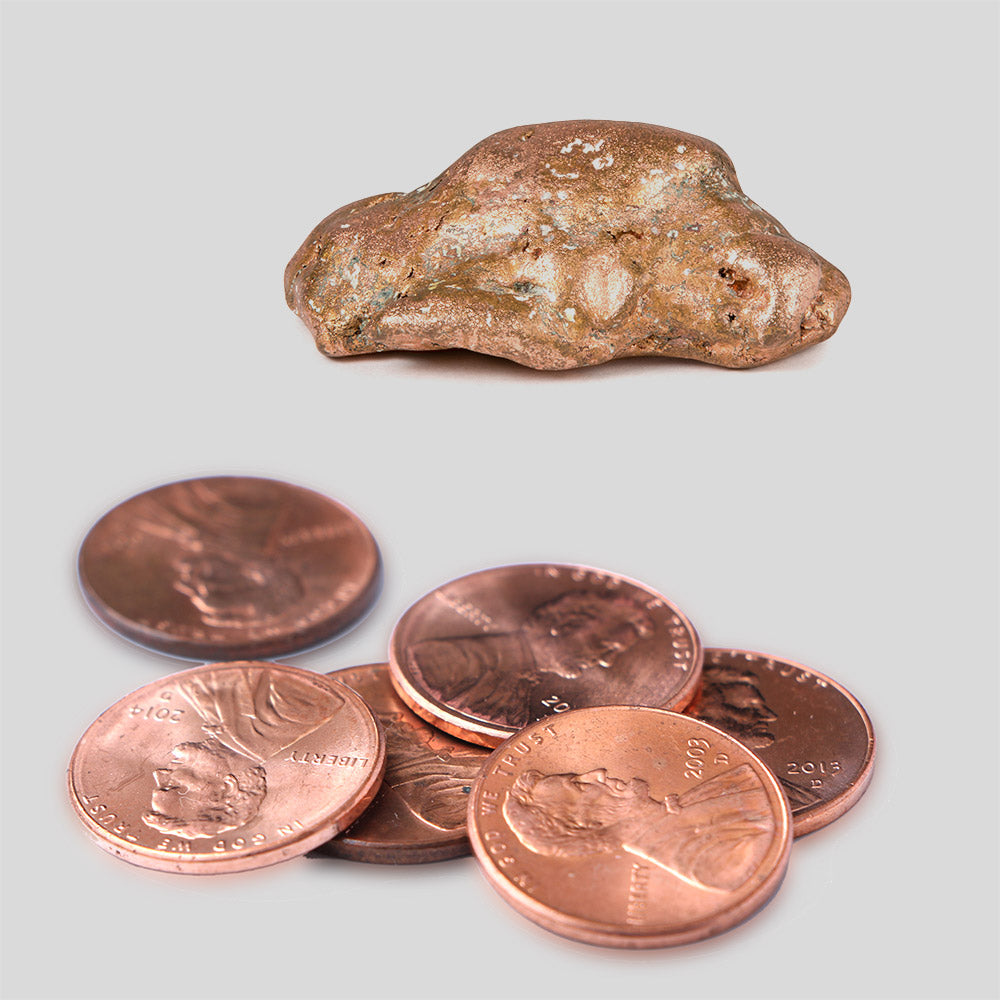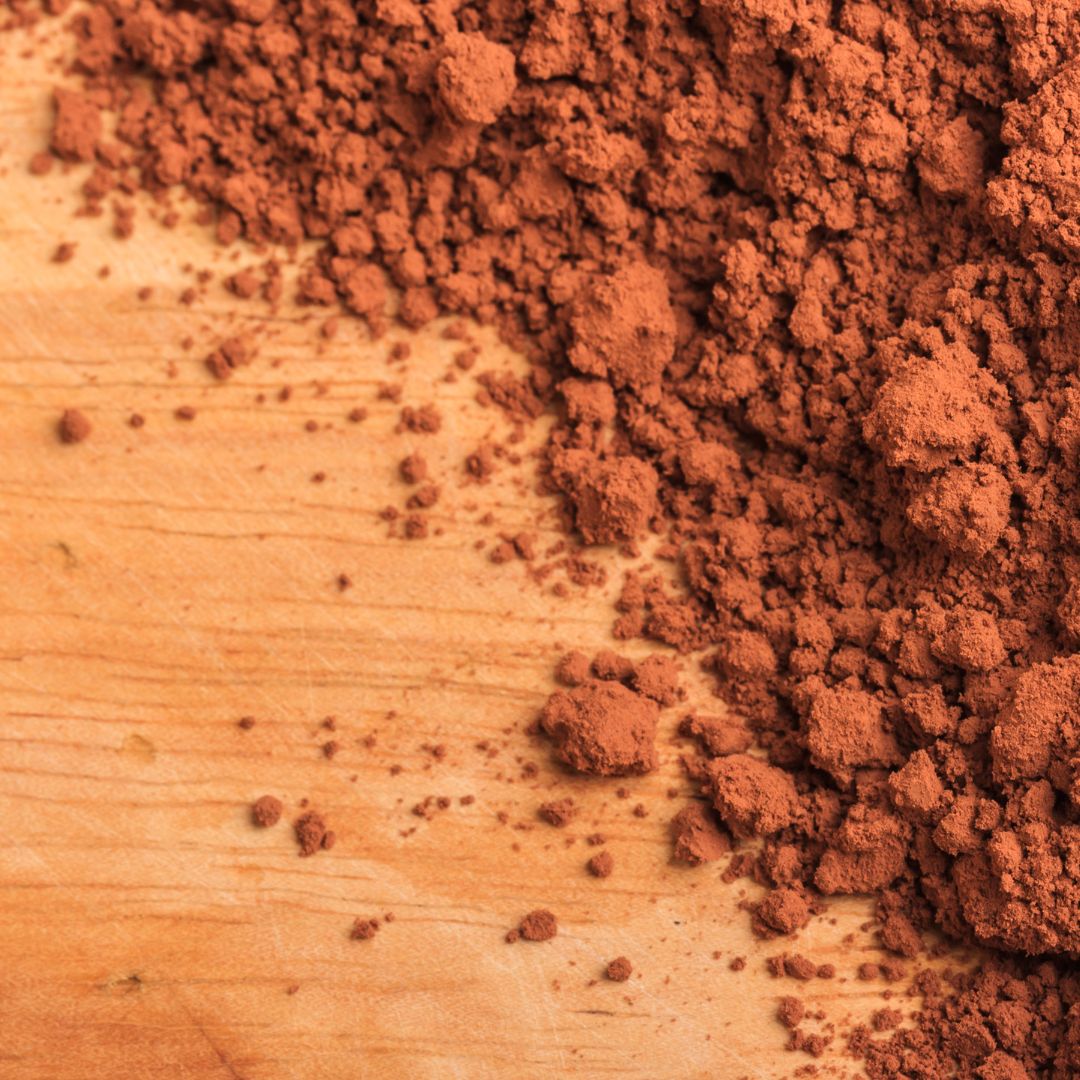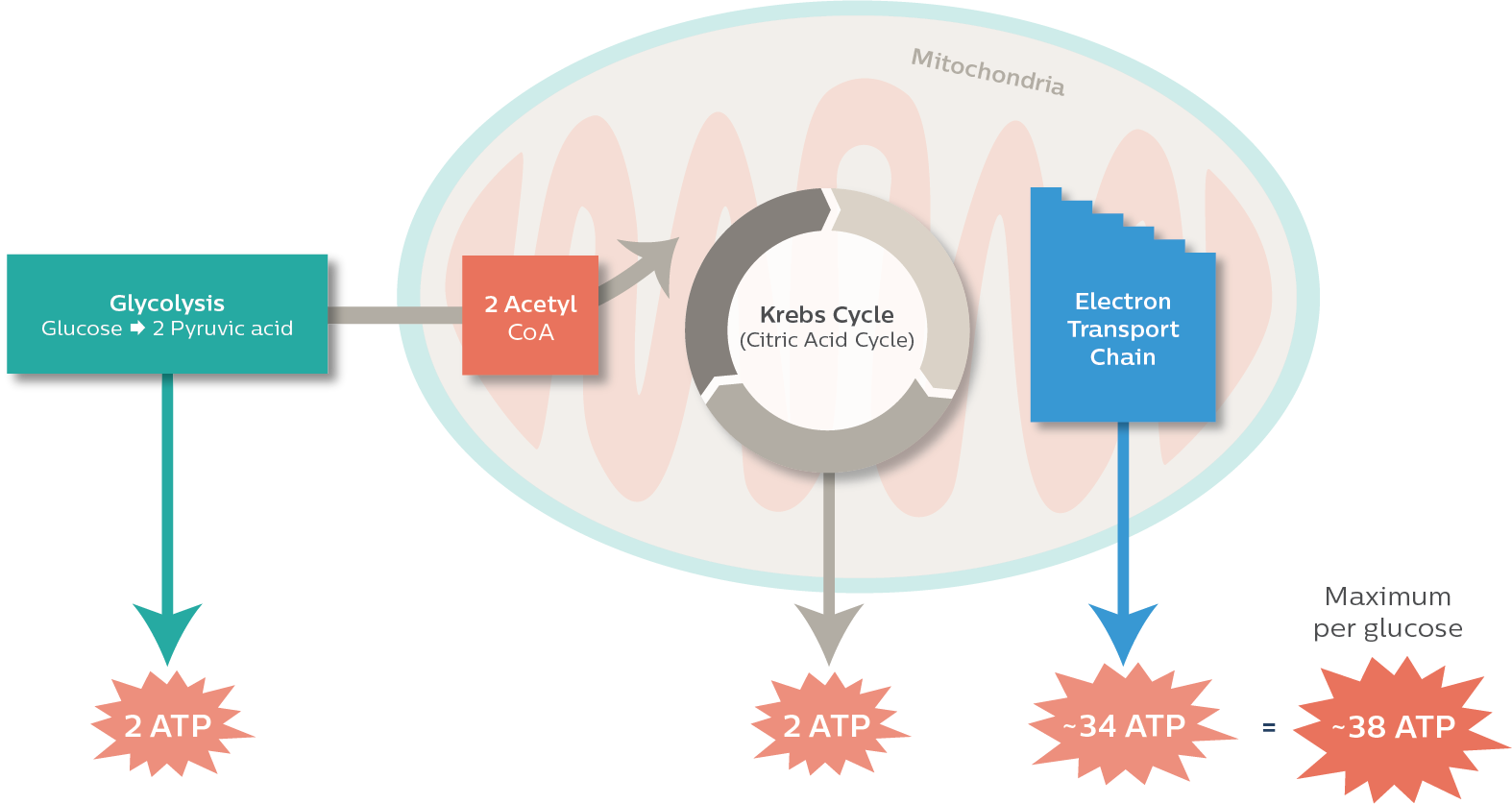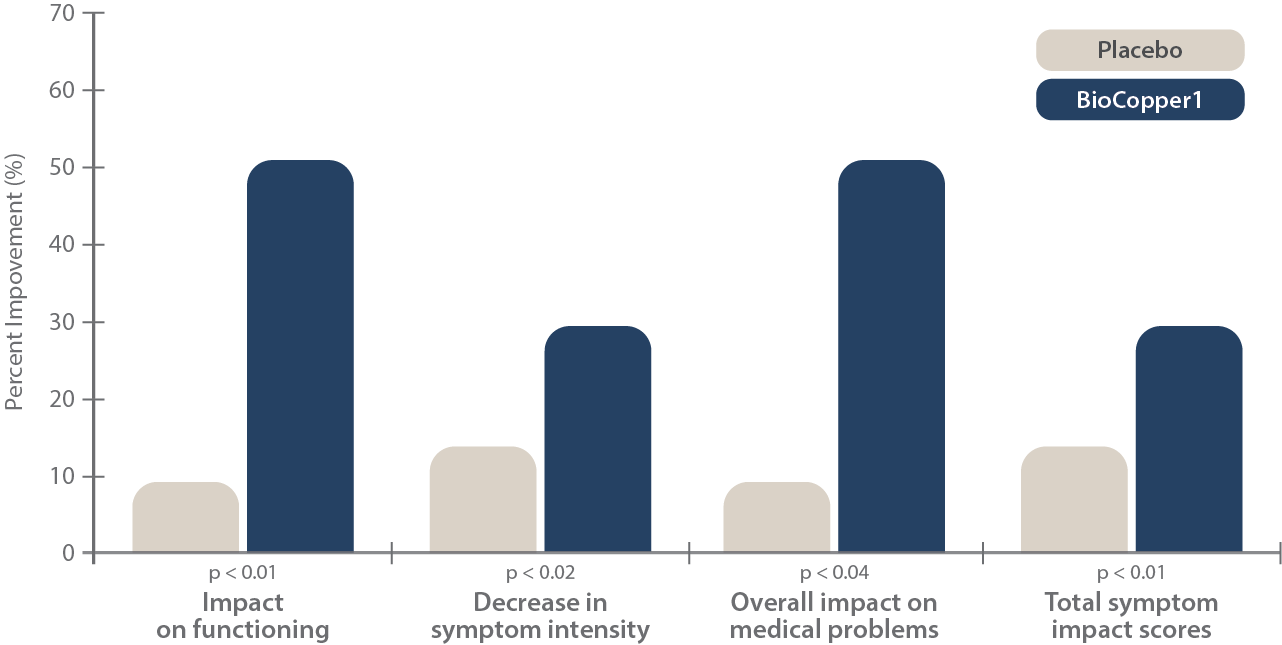Copper’s Oxidative State Matters
Types of Copper

CU
Copper 0
29 electrons
29 protons
Solid Copper, such as a penny, pipe or nugget.

CU+
Copper 1
28 electrons
29 protons
Half oxidized, and properly chelated, this copper is bioavailable to your body and essential for cellular health.
This is the copper in MitoSynergy products.

CU2+
Copper 2
27 electrons
29 protons
Fully oxidized, this copper is non-bioavailable. It enters the body, but does NOT get absorbed and accumulates in the extracellular matrix. This is the copper in ALL other supplement brands.

Importance of Copper 1 to our bodies: ATP Cycling
- For every cell in your body, the source of energy that keeps everything working is called Adenosine triphosphate (ATP). ATP is your body’s way to store and use energy.
- ATP are required for the active transport of nutrients into cells and waste out of cells.
- Copper (I) is essential in completing the Electron Transport Chain, resulting in 34 ATP. That’s almost 90% of the energy that your body makes.
Copper (II) acts over many years to cause cognition loss.
Morris and colleagues5 in human studies showed that the highest quintile of copper II intake lost cognition at 6 times the rate of other groups (no copper intake at all) .
Mursa et al6 have reported that mortality was 42% higher in older women taking copper [all copper (II)] containing supplement pills.
George J Brewer, M.D, Sellner Emeritus
Professor of Human Genetics, Emeritus Professor of Internal Medicine, University of Michigan Medical School, Ann Arbor, MI
A Randomized, Double Blind Placebo Controlled, Parallel Study
Evaluated the efficacy of Cunermuspir on energy, strength, fatigue, and discomfort in subjects with nerve or muscle pain. Fifty six subjects (28 male and 28 female) with muscle/nerve pain were selected.
- Support energy metabolism and support mitochondrial health.
- The enhancement of mitochondrial function may also act to prevent the structural changes in muscle that are associated with discomfort and fatigue.
- The therapeutic benefits include enhancement of energy and muscle strength, and relief from muscle and nerve discomfort and inflammation.

Impact of Medical Symptoms on Subject’s Daily Life
Improvements in the impact of muscle and nerve pain symptoms on subject’s daily life per protocol participants supplemented with placebo or Cunermuspir. N = 25 and 24 for placebo and Cunermuspir, respectively. P values correspond to between group comparisons.
Paper: A novel copper-nicotinic acid therapeutic agent for support of mitochondrial function
Wide-ranging therapeutic agent that would support mitochondrial function, remediate oxidative stress, and fight certain bacterial and fungal infections
Copper complexes can also modulate copper homeostasis in the brain, resulting in protective effects in several models of neurodegeneration.
It has long been used as broad-spectrum lipid drug, as it lowers the levels of all atherogenic lipoproteins and raises the levels of the protective HDL lipoproteins.
Read the paperIt is clear that copper (II) is extremely toxic.
It is as toxic to the brain as lead, but in a different way. Lead acts quickly to cause damage, including brain damage.
At least a sizable proportion of copper (II) ingested bypasses the liver, which puts copper into safe channels, and appears immediately in the blood free copper pool, where over time it is toxic to cognition. Ingested copper (I) is all metabolized by the liver and put into safe channels.
- George J Brewer, M.D, Sellner Emeritus, Professor of Human Genetics, Emeritus Professor of Internal Medicine, University of Michigan Medical School, Ann Arbor, MI
It is clear that ingestion of copper (II) is toxic. Yet all the copper supplement pills contain copper (II). A copper (I) supplement pill, such as that produced by MitoSynergy, is absolutely required for copper supplementation.
The role of copper (II) in causing the AD epidemic is summarized in several reviews.
References
- Sparks DL, Schreurs BG. Trace amounts of copper in water induce beta-amyloid plaques and learning deficits in a rabbit model of Alzheimer’s disease. Proc Natl Acad Sci USA. 2003;100:11065 (I)1069.
- Ceko MJ, Aitken JB, Harris HH. Speciation of copper in range of food types by x-ray absorption spectroscopy. Food CHem 2014;164, 50-54.
- Sparks DL, Friedland R, Petanceska S, et al. Trace copper levels in drinking water, but not zinc or aluminum, influence CNS Alzheimer-like pathology. J Nutr Health Aging;10:247 (II)54. 2006.
- Singh I, Sagare AP, Coma M, Perlmutter D. Low levels of copper disrupt brain amyloid-beta homeostasis by altering its production and clearance. Proc Natl Acad Sci USA 2013;110:14471 (I)4476.
- Morris MC, Evans DA, Tangney CC, Bienias JL. Dietary copper and high saturated and trans fat intakes associated with cognitive decline. Arch Neurol 2006;63:1085 (I)088.
- Mursa J, Robien K, Hamack LJ, Park K, Jacobs DR. Dietary supplements and mortality rate in older women: The Iowa Women’s Health Study. Arch Int Med 2011;445:1625 (I)633.
- Hill GM, Brewer GJ, Juni JE, Prasad AS. Treatment of Wilson’s disease with zinc. II. Validation of oral 64 copper with copper balance. Am J Med Sci 1986;292,344-349.
- Ohink H, Thiele DJ. How copper tranverses cellular membranes through the copper transporter 1, Ctrl. Ann NY Acad Sci 2014;1314: 32-41.
- Foley PT. International Copper Demand Patterns – The Case of Plumbing Tube, CRU Consultants Inc., New York, NY, Economics of Internationally Traded Minerals, Economics of Copper, Section t.2, pp. 183 (I)86.
- Brewer GJ. Copper excess, zinc deficiency, and cognition loss in Alzheimer’s disease. Biofactors 2012;38:107 (I)13.
- Brewer GJ. Divalent copper as a triggering agent in Alzheimer’s disease. J Alzheimers Dis 2015;46:593-604.
More Copper (I) Research
A combination therapy with copper nicotinate complex reduces the adverse effects of 5-fluorouracil on patients with hepatocellular carcinoma
Dr. Muhammad A. El-Saadani, Department of Biochemistry, Faculty of Science, Alexandria University, Alexandria, Egypt
Conclusion: The combination of 5-FU (12 mg/kg/day) with Cu (I)–nicotinic acid complex (0.8 mg/kg/day) that given in such a dosage schedule mitigated the most frequent toxicities associating 5-FU administration and enhanced defense mechanisms against oxidative stress.
5-fluorouracil (5–FU) is a fluoropyrimidine antimetabolite drug that widely used in the treatment of cancer over the last two decades
Read the paperPhysiological studies on the effect of copper nicotinate (Cu–N complex) on the fish, Clarias gariepinus, exposed to mercuric chloride
M. Bassam Al-Salahy
The addition of copper nicotinate (CN) in fish diets could protect the fish C. gariepinus against MC (mercuric chloride) induced oxidative damage showing recovery of fish organs. The recovering action of CN may be attributed to its enhancing effect on scavenging free radicals, elevating level of antioxidants, increasing compounds-rich in SH-group, compensating the copper loss in the body as well as tissue healing.
Read the paper
